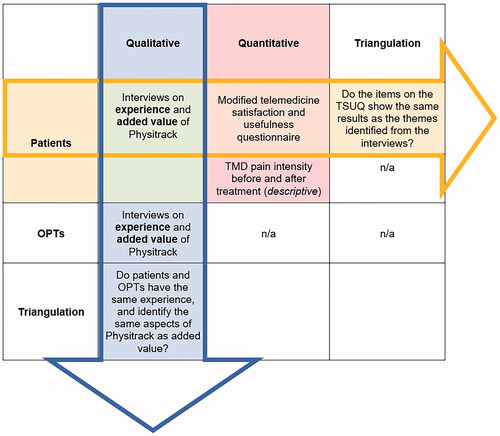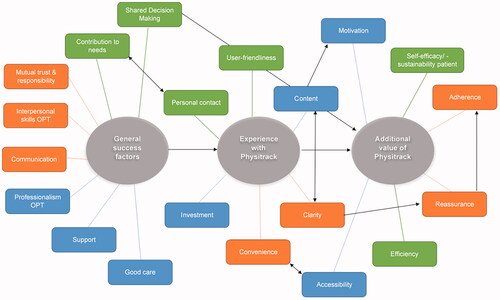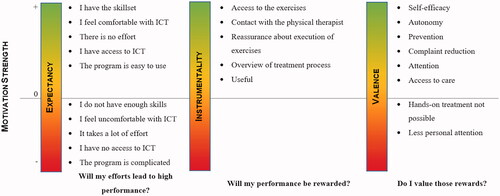Figures & data
Figure 1. Overview of mixed-methods: data sources and research questions.

Table 1. Basic characteristics of orofacial physical therapists.
Table 2. Used functions of the Physitrack application prior to the interview.
Table 3. Basic characteristics patients with TMD.
Figure 2. Model of interaction between sub-themes identified by orofacial physical therapists and patients. Green: sub-themes identified by both orofacial physical therapists (OPTs) and patients; orange: sub-themes identified by patients; blue: sub-themes identified by OPTs; grey: major themes.

Table 4. Overview of themes for both patients and orofacial physical therapists.
Table 5. Results of the telemedicine satisfaction and usefulness questionnaire.
Figure 3. Strength of motivation to use Physitrack for patients with a temporomandibular disorder related to the expectation theory.

